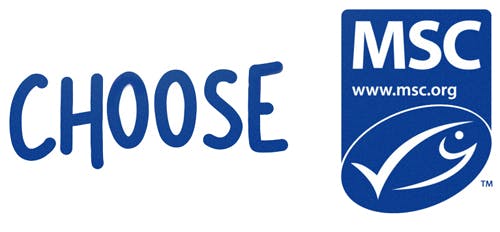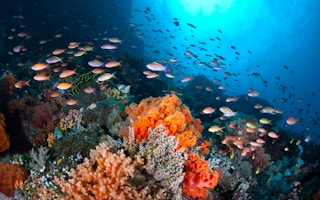From feeding humans to regulating the climate, water and carbon cycles; housing more than 230,000 known species of marine life, and producing the very air we breathe, oceans are, without question, essential for life on Earth.
To continue reading, subscribe to Eco‑Business.
There's something for everyone. We offer a range of subscription plans.
- Access our stories and receive our Insights Weekly newsletter with the free EB Member plan.
- Unlock unlimited access to our content and archive with EB Circle.
- Publish your content with EB Premium.
But they are under more threat than ever. Fish are being caught for food faster than their populations can regenerate; seas are growing more acidic due to rising concentrations of carbon dioxide in the atmosphere; and humans toss so much plastic waste into the ocean that the Ellen MacArthur Foundation predicts that by 2050, there could be more plastic than fish in the sea by weight.
Despite these threats (see the guide Plastic Pollution: Single Use Plastic Impact on our Oceans for more detail) oceans are some of the most poorly protected ecosystems on earth. The World Wide Fund for Nature (WWF) estimates that only 3.4 per cent of oceans are protected; fishing, tourism, and other commercial activities carry on with few checks globally.
In a bid to raise public awareness and encourage ocean protection efforts, the global community, led by the United Nations, has observed World Oceans Day every June 8 since 1992.
This year’s World Oceans Day theme is “Our oceans, our future”, and focuses on preventing plastic pollution. In line with the message that we all have a role to play in protecting the ocean for generations to come, here are six sea-saving actions that everyone can take today.
1. Keep the oceans clean
Plastic is the worst offender when it comes to marine litter, with scientists estimating that about eight million metric tonnes of plastic waste enter oceans annually. In addition to trash like plastic bags, straws, and takeaway containers, ‘microplastics’—bits of plastic that are less than five millimetres long and usually found in products such as toothpaste and exfoliating scrubs—also end up in the sea, where they are ingested by marine animals.
The steps needed to address this are all too easy: Swap plastic bags and disposable containers for reusable alternatives such as cotton totes, reusable coffee cups, and sturdy food containers; stop using products with microbeads; and never, ever, litter.
Individuals, community groups, and companies can also go beyond small lifestyle changes by forming groups to collect trash from beaches. As the before-and-after images of the world’s largest clean-up at a beach in Mumbai, India show, small contributions of time and effort can add up to a big impact.
2. Choose responsible seafood
The ocean’s seafood resources are being depleted faster than they can regenerate. WWF, for instance, classifies 85 per cent of the world’s fisheries as “exploited, overexploited, depleted, or recovering from depletion”.
Fishing methods such as using dynamite or cyanide to kill fish, or dragging tire-reinforced industrial trawling nets indiscriminately across the ocean floor also causes ecological destruction beyond shrinking fish populations.

Marine Stewardship Council logo. Image: Marine Stewardship Council
One way to avoid supporting such practices is to look for the Marine Stewardship Council logo on supermarket shelves; the industry association certifies seafood that is harvested using environmentally responsible practices, and bans cyanide or dynamite fishing.
One fish species whose consumption has long been controversial is tuna; the fish is often caught by dropping nets resembling giant drawstring bags into the ocean, using gadgets known as fish aggregation devices to attract fish into the nets, and then quickly closing them.
This method, known as ‘purse seine’ fishing, is associated with problems including the unintentional death of immature fish, other fish species, and even dolphins.
The world’s largest producer of tuna, Thai Union, knows the challenges of sustainable tuna sourcing all too well. The company in 2015 found itself in the crosshairs of Greenpeace, which accused Thai Union of labour rights abuses on board its fishing vessels, and unsustainable fishing practices.
The company has spent the past few years implementing various measures to improve its sustainability.
Darian McBain, Thai Union’s global director of sustainable development, shares that the company’s efforts include a pledge to source all tuna from fisheries that are either MSC-certified or engaged in projects to help them obtain the certification; ensuring supply chain traceability so that customers can scan bar codes on supermarket products to see where the fish was caught; and providing all its fishermen with satellite communication technology to help them keep in touch with their communities while at sea.
“If you have traceable seafood, you can understand other characteristics such as whether the fish is legally caught,” says McBain, adding that customers can do their part to consume sustainable seafood by choosing responsibly sourced seafood, avoiding endangered fish such as Bluefin tuna, and encouraging retailers and restaurants to switch to sustainable seafood.
“We all need to be working towards the same outcome,” says McBain.
3. Reduce your energy use
As oceans absorb carbon dioxide from the atmosphere, they become more acidic. This phenomenon, known as ocean acidification, threatens marine ecosystems because it reduces concentrations of calcium carbonate, an essential mineral for shellfish, crustaceans, and corals to make their skeletons or shells.
Not only does this destroy the balance of oceanic ecosystems, but shellfish and other marine animals are an essential source of food and livelihoods for billions.
The United States National Oceanic and Atmospheric Administration (NOAA) estimates that ocean acidity has increased by 30 per cent since the industrial revolution. To help slow this down, everyone can reduce their carbon footprint by slashing energy use, driving less, or even making the switch to renewable energy sources.
4. Speak up for the ocean
For oil and gas companies, the ocean’s true value lies in the massive deposits of fossil fuels that lie beneath its surface.
From oil giant Shell’s now-abandoned plans to drill for oil in the Chukchi Sea in the Arctic to BP’s intention to drill in the Great Australian Bight—a tract of ocean off Australia’s southern coast—to Indian coal giant Adani’s planned coal mine near the Great Barrier Reef, it is clear that fossil fuel firms have no qualms about exploring in, or near oceans.
But as BP’s 2010 oil spill in the Gulf of Mexico and the destruction of vast tracts of coral in Indonesia due to a cruise ship grounding demonstrate, an accident or spill in the ocean can have long-lasting and catastrophic consequences.
Yet another reason to halt fossil fuel extraction, including in oceans, is that they need to be left in the ground in order to mitigate climate change. Research published in Nature journal in 2015 shows that known reserves of coal, oil, and natural gas cannot be burnt if a global temperature rise is to be capped at two degrees Celsius.
For virtually every set of ocean exploration plans by fossil fuel companies, there is a petition or campaign to oppose it. If you live in areas affected by such projects, educate yourself on the issues, evaluate the benefits and risks of the project, and if you feel like the activity would harm the ocean, lend your voice, time, or even financial support to ongoing activist efforts.
5. Think about the animals
Refusing to support the capture and exploitation of marine animals for entertainment or education is another way to protect oceans and the life they sustain.
In Singapore, for instance, environmental group Animal Concerns Research & Education Society (ACRES) has been campaigning to ‘Save the World’s Saddest Dolphins‘ since 2011. These are a group of 25 dolphins caught off the Solomon Islands coast and held captive at local tourism hub Resort World Sentosa. Four dolphins have died since the campaign was launched.
The same issue exists in marine parks and commercial aquariums all over the world, with distressing consequences for the animals and sometimes, their human handlers too.
Anbarasi Boopal, deputy chief executive, ACRES, tells Eco-Business that “wild animals belong in the wild, and should not be removed for entertainment and profiteering”.
“By watching them in captivity, one is directly supporting the cruelty and suffering behind the industry,“ adds Boopal. “Individuals can instead choose to watch them in the wild, to appreciate them as they are and learn more about them.”
Ethical alternatives to learning about marine life include tours that take people to see dolphins and whales in the wild, and organisations that rehabilitate and release marine life rather than breeding or capturing it.
6. Educate yourself—and others
Ocean protection is no doubt a complex issue, intertwined with how we eat, live, and even commute. There are many documentaries available that provide a comprehensive education on the issues, and introduce solutions that can help.
The official World Oceans Day website recommends films such as A Plastic Ocean, Planet Ocean, and Acid Test; the latter two are free to view online.
Whether it is watching one of these documentaries, hosting a screening for your community, or taking action to rethink your seafood choices, there is plenty you can do to save the seas. Tell us in the comments how you are observing World Oceans Day this year!

















